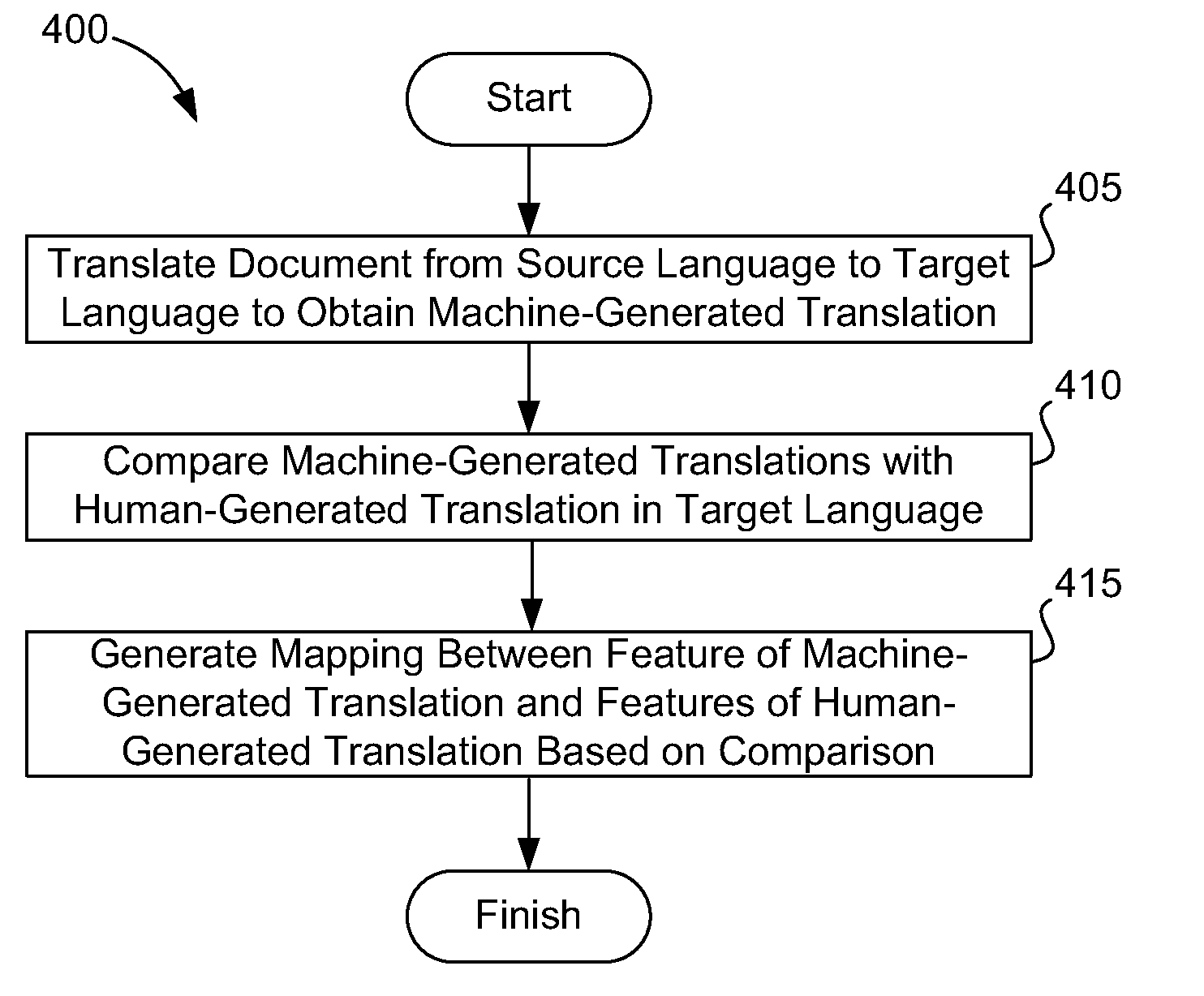Providing Machine-Generated Translations and Corresponding Trust Levels
- Summary
- Abstract
- Description
- Claims
- Application Information
AI Technical Summary
Benefits of technology
Problems solved by technology
Method used
Image
Examples
Embodiment Construction
[0021]The present technology allows a trust level to be predicted for machine-generated translations. More specifically, given a machine-generated translation in a target language of a document in source language, a trust level associated with translational accuracy can be predicted and provided along with the machine-generated translation. Such a document can include any amount of text ranging, for example, from a few words to a batch of textual items such as websites, books, articles, or letters. The trust level may be presented in a number of manners such as on a scale between one and five, or a star rating scale. The trust level can be predicted without a human-generated translation of the document or any other human intervention. Since both the machine-generated translation and the corresponding trust-level prediction can be provided contemporaneously, it is immediately conveyed how much trust can be placed in the machine-generated translation without an understanding of the so...
PUM
 Login to View More
Login to View More Abstract
Description
Claims
Application Information
 Login to View More
Login to View More - R&D
- Intellectual Property
- Life Sciences
- Materials
- Tech Scout
- Unparalleled Data Quality
- Higher Quality Content
- 60% Fewer Hallucinations
Browse by: Latest US Patents, China's latest patents, Technical Efficacy Thesaurus, Application Domain, Technology Topic, Popular Technical Reports.
© 2025 PatSnap. All rights reserved.Legal|Privacy policy|Modern Slavery Act Transparency Statement|Sitemap|About US| Contact US: help@patsnap.com



